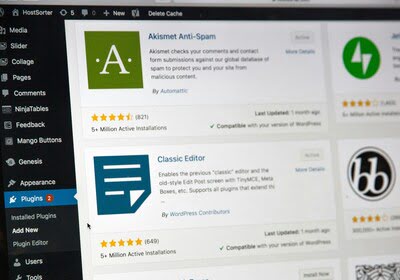The internet is for everyone—or at least, it should be. Yet millions of people with disabilities still face barriers when accessing websites. From low-contrast text to inaccessible navigation, poorly designed sites exclude users who rely on assistive technologies.
Building accessible websites isn’t just a legal or technical requirement—it’s about creating equal opportunities for all users, regardless of ability. In this blog, we’ll explore why accessibility matters, key principles, and practical steps to make websites more inclusive.
1. Why Accessibility Matters
- Inclusivity: Around 1 in 6 people worldwide live with a disability. Accessibility ensures they can participate fully online.
- Legal Compliance: Many countries enforce digital accessibility laws (like ADA, WCAG, and Section 508).
- Better UX for All: Accessibility improvements (like clear navigation and captions) benefit everyone, not just people with disabilities.
- SEO Advantages: Search engines reward accessible websites with better visibility.
Building with accessibility in mind is not just ethical—it’s also smart business.
2. Principles of Web Accessibility (WCAG Guidelines)
The Web Content Accessibility Guidelines (WCAG) outline four main principles, often remembered by the acronym POUR:
- Perceivable → Information must be available to all senses (e.g., text alternatives for images, captions for videos).
- Operable → Users should be able to navigate using different input methods (keyboard, voice, etc.).
- Understandable → Content should be clear and predictable.
- Robust → Websites should work well with assistive technologies like screen readers.
3. Practical Steps to Build Accessible Websites
- Use Semantic HTML: Proper use of headings (<h1>, <h2>), lists, and labels helps screen readers interpret content correctly.
- Provide Text Alternatives: Add alt text to images and offer transcripts and captions for audio/video content.
- Ensure Color Contrast: Make text easily readable with sufficient contrast between foreground and background colors.
- Keyboard-Friendly Navigation: All interactive elements (buttons, menus, forms) should be accessible using only a keyboard.
- Accessible Forms: Label inputs clearly, provide helpful error messages, and group related fields.
- Responsive & Scalable Design: Ensure layouts adapt to different screen sizes and allow text resizing without breaking the design.
4. Tools for Testing Accessibility
- WAVE → Quick accessibility checks.
- axe DevTools → Automated testing in browsers.
- Lighthouse → Built-in accessibility audits in Chrome DevTools.
- Screen Readers (NVDA, VoiceOver, JAWS) → Test real-world experiences.
Using both automated tools and manual testing ensures thorough accessibility coverage.
5. The Benefits of Accessibility Beyond Compliance
- Wider Audience Reach → More people can engage with your site.
- Stronger Brand Reputation → Businesses seen as inclusive build customer trust.
- Future-Proofing → Accessibility-ready sites adapt better to new technologies.
✅ Conclusion
Building accessible websites is about more than checking boxes—it’s about designing with empathy, inclusivity, and usability at the core. By following accessibility best practices, businesses can create digital spaces where everyone feels welcome.
Accessibility improves not just the lives of people with disabilities, but also enhances usability, SEO, and overall user experience. In short: accessibility is good design.




